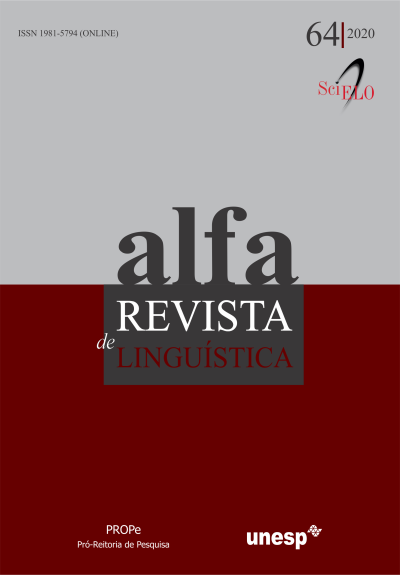Morphosyntactic Alignment of Hñähñú (Mezquital Valley Otomi)
DOI:
https://doi.org/10.1590/1981-5794-e11816Keywords:
Otomi languages, Morphosyntactic alignment, Semantics, Comparative linguistics, Meta-analysis,Abstract
This paper describes the subject and object alignments in Hñähñu (Mezquital Valley Otomi), and compares some of their grammatical, lexical, and semantic features to those in the corresponding descriptions of Querétaro Otomi and Acazulco Otomi. The analysis presented is based on the characterization of semantic alignment by Mithun (1991) and Donohue (2008), and that of object alignment by Dryer (1986) and Haspelmath (2005); thematic roles are defined by following Bickel’s (2012) grammatical relation typology. With respect to subject alignment, the split-S systems in the three languages being compared has two classes of intransitive verbs: verbs with a non-agentive S (O-verbs), and the rest (A-verbs). The three languages differ in the number of lexemes within the O-verb class, and in the number of fluid-S verbs; the morphology of O-verbs presents minor contrasts among the three. As for object alignment, the mixed characterization (i.e., indirective, as well as secundative, features) of the Hñähñu system derived from four morphosyntactic criteria suggests that the marking of object in Otomi languages obeys mechanisms that go beyond thematic roles.Downloads
Download data is not yet available.
Downloads
Published
23/10/2020
How to Cite
HERNÁNDEZ-GREEN, N. Morphosyntactic Alignment of Hñähñú (Mezquital Valley Otomi). ALFA: Revista de Linguística, São Paulo, v. 64, 2020. DOI: 10.1590/1981-5794-e11816. Disponível em: https://periodicos.fclar.unesp.br/alfa/article/view/11816. Acesso em: 11 jan. 2026.
Issue
Section
Papers
License
Manuscripts accepted for publication and published are property of Alfa: Revista de Linguística. It is forbidden the full or partial submission of the manuscript to any other journal. Authors are solely responsible for the article's content. Translation into another language without written permission from the Editor advised by the Editorial Board is prohibited.

